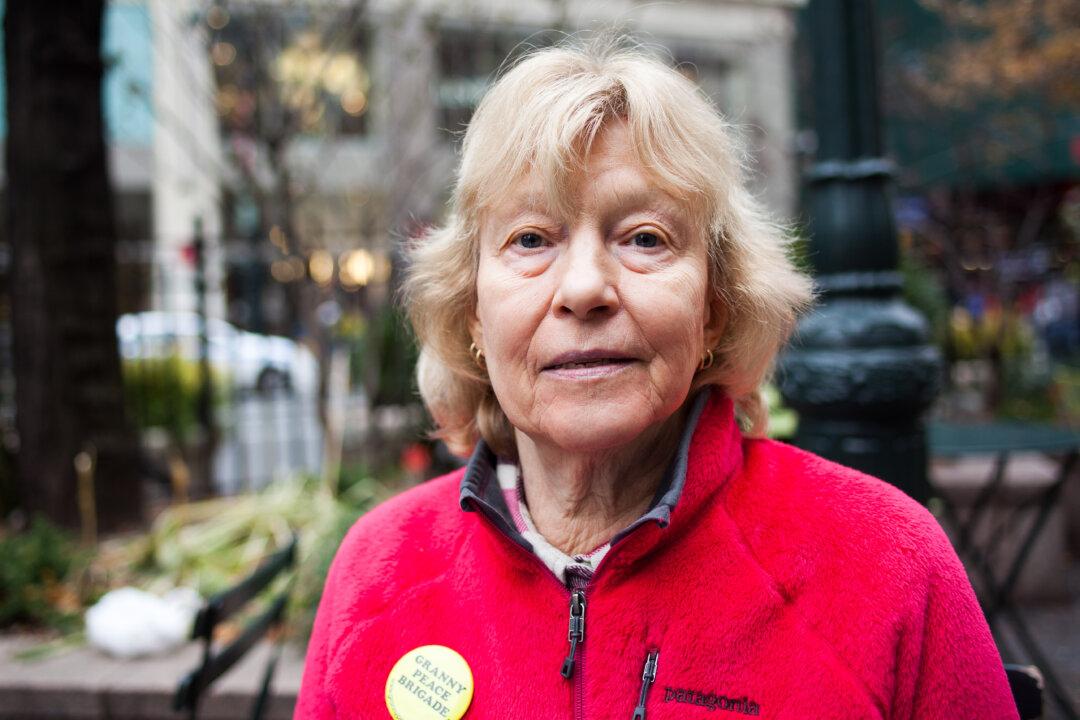NEW YORK—Two weeks ago, after Eva-Lee Baird, 74, marched in the peace contingent of the Veterans Day Parade in New York City, an old friend sent her a picture dating back almost 50 years. It was her younger self pushing a stroller in a 1965 peace march. The photograph brought back memories—as if Baird’s life had come full circle.
When Baird, a Manhattanite, retired from teaching art at public schools in 2005, she decided to take her interest in activism to a new level. If the peace marches taught her anything, it was that they had to be done, however “difficult and hopeless and useless” they seemed.
Together with some 30 retired New York women, she formed the Granny Peace Brigade. In a sense, the group returned her to the fundamentals of her youth activism, as the first issue they took on was criticizing the U.S.’s foreign military presence they deemed unnecessary, such as military bases in South America.





